
Fuchsia 'Dark Eyes', Fuchsia 'Dark Eyes' in GardenTags plant encyclopedia
Fuchsia 'Dark Eyes' A cheerful addition to the summer garden, award-winner Fuchsia 'Dark Eyes' is an upright, bushy deciduous shrub with frilly red and purple blooms of great beauty. Blooming from early summer until frost, the medium-sized, double flowers feature red upswept sepals and a violet-blue corolla with rolled petals.
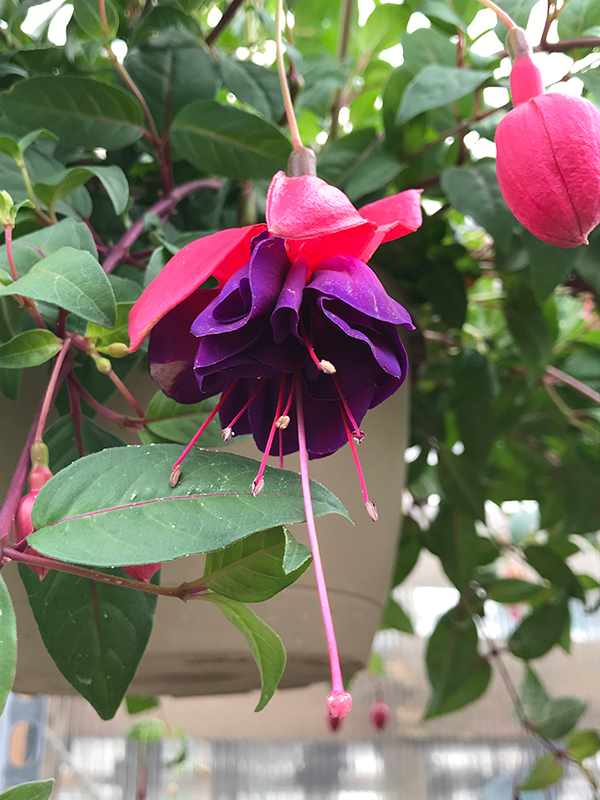
Dark Eyes Fuchsia (Fuchsia 'Dark Eyes') in Denver Arvada Wheat Ridge
Fuchsia Dark Eyes has a trailing habit with flowers that have deep blue corollas with red sepals. The flowers bloom all season long. This is a fantastic shade plant that attracts butterflies and hummingbirds. It looks great and adds lots of color to containers and window boxes. Uses: Combination Containers, Hanging Baskets.
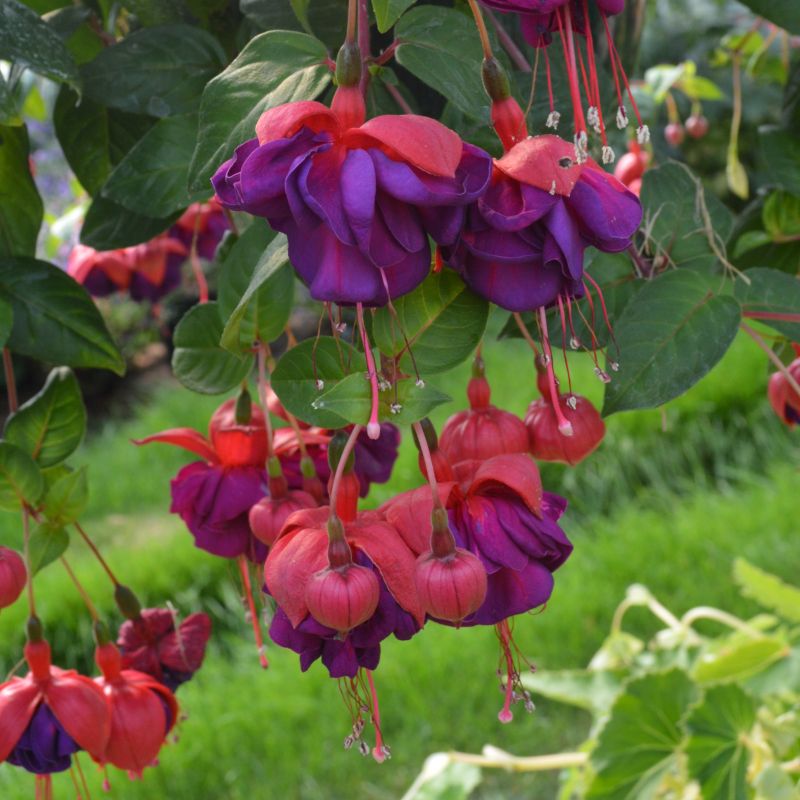
Fuchsia Trailing 'Dark Eyes' (AGM) (9cm Pot) Coolings Garden Centre
Details Features Deep blue corollas with red sepals spring to fall Deadheading Not Necessary Attracts: Birds Butterflies Hummingbirds Characteristics Plant Type: Annual Height Category: Medium Garden Height: 4 - 8 Inches Spacing: 18 - 24 Inches Spread:
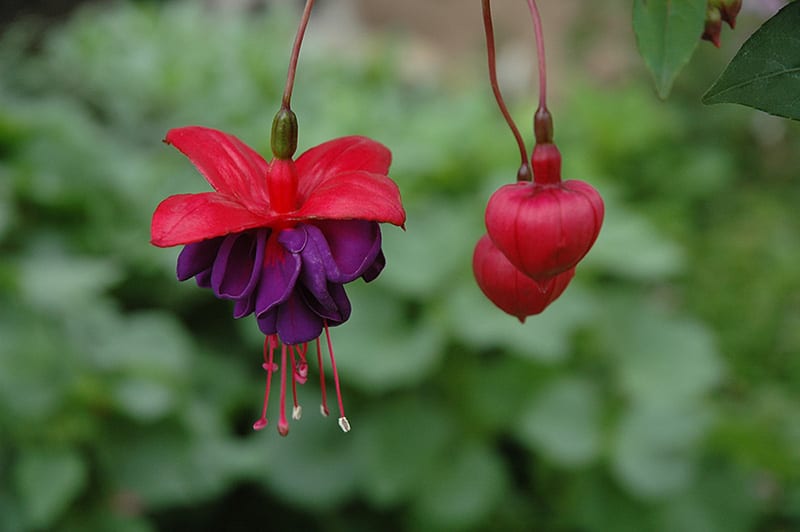
Dark Eyes Fuchsia Calloway's Nursery
Cultivar: Dark Eyes Family: Onagraceae Size: Height: 2.5 ft. to 6 ft. Width: 1.67 ft. to 3 ft. Plant Category: annuals and biennials, landscape, perennials, shrubs, Plant Characteristics: seed start, spreading, Foliage Characteristics: deciduous, Flower Characteristics: double, long lasting, Flower Color: blues, purples, reds, Tolerances:
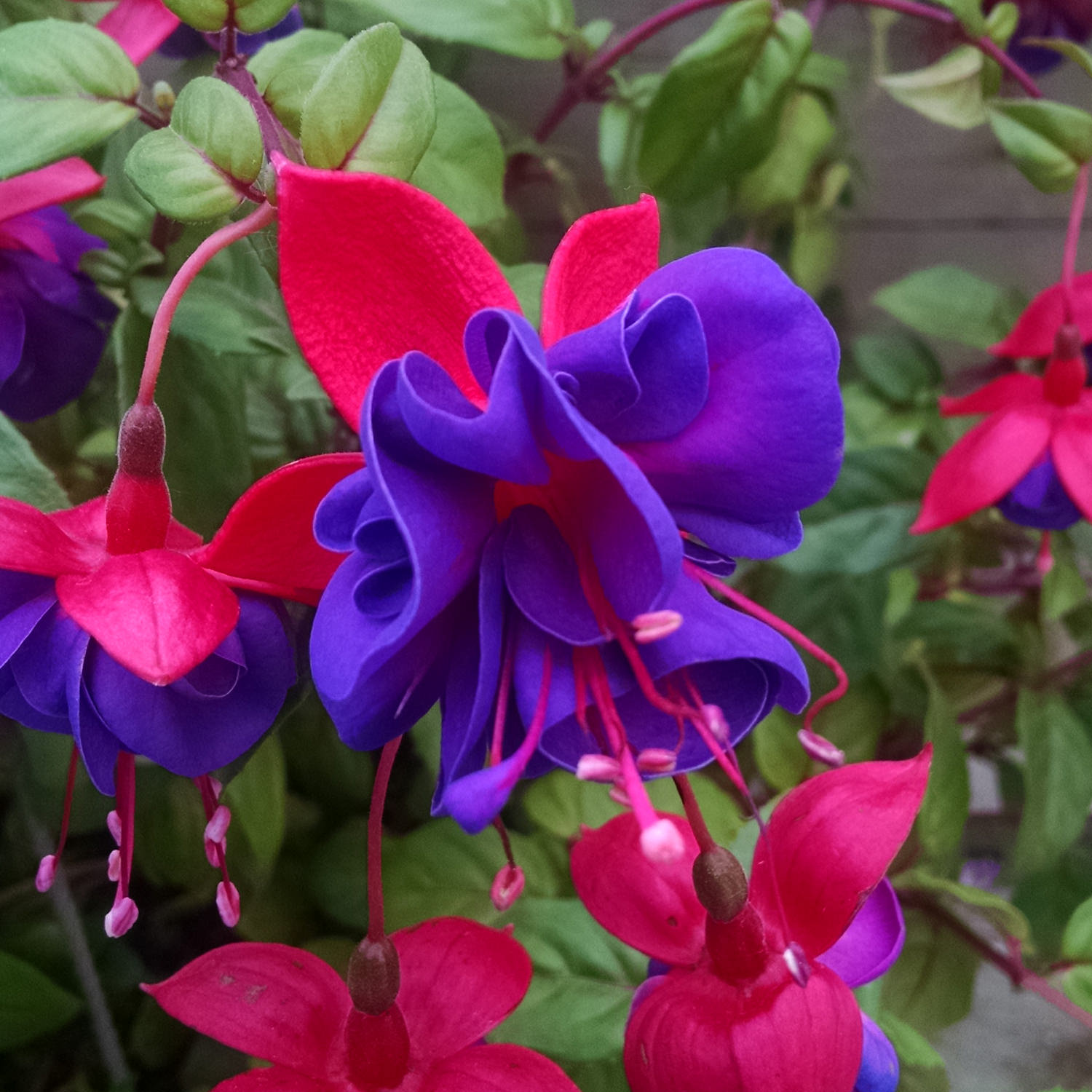
Fuchsia Dark Eyes Buy Fuchsia Annuals Online
Dark Eyes Dark Eyes Tube color : dark red Sepal color : dark red Corolla color : violet blue Flower : double Habitus : upright Parentage : X Categories: Erickson Robert, United States SKU: AFS351 Tags: AFS-50s hardy medium-tubed picture POST1939 Description Additional information TUBE Tube color : dark red Tube shape : Tube dimensions : SEPALS

PlantFiles Pictures Fuchsia 'Dark Eyes' (Fuchsia) by wallaby1
Planting & Growing. Dark Eyes Fuchsia will grow to be about 12 inches tall at maturity, with a spread of 24 inches. It tends to fill out right to the ground and therefore doesn't necessarily require facer plants in front. It grows at a fast rate, and under ideal conditions can be expected to live for approximately 8 years.
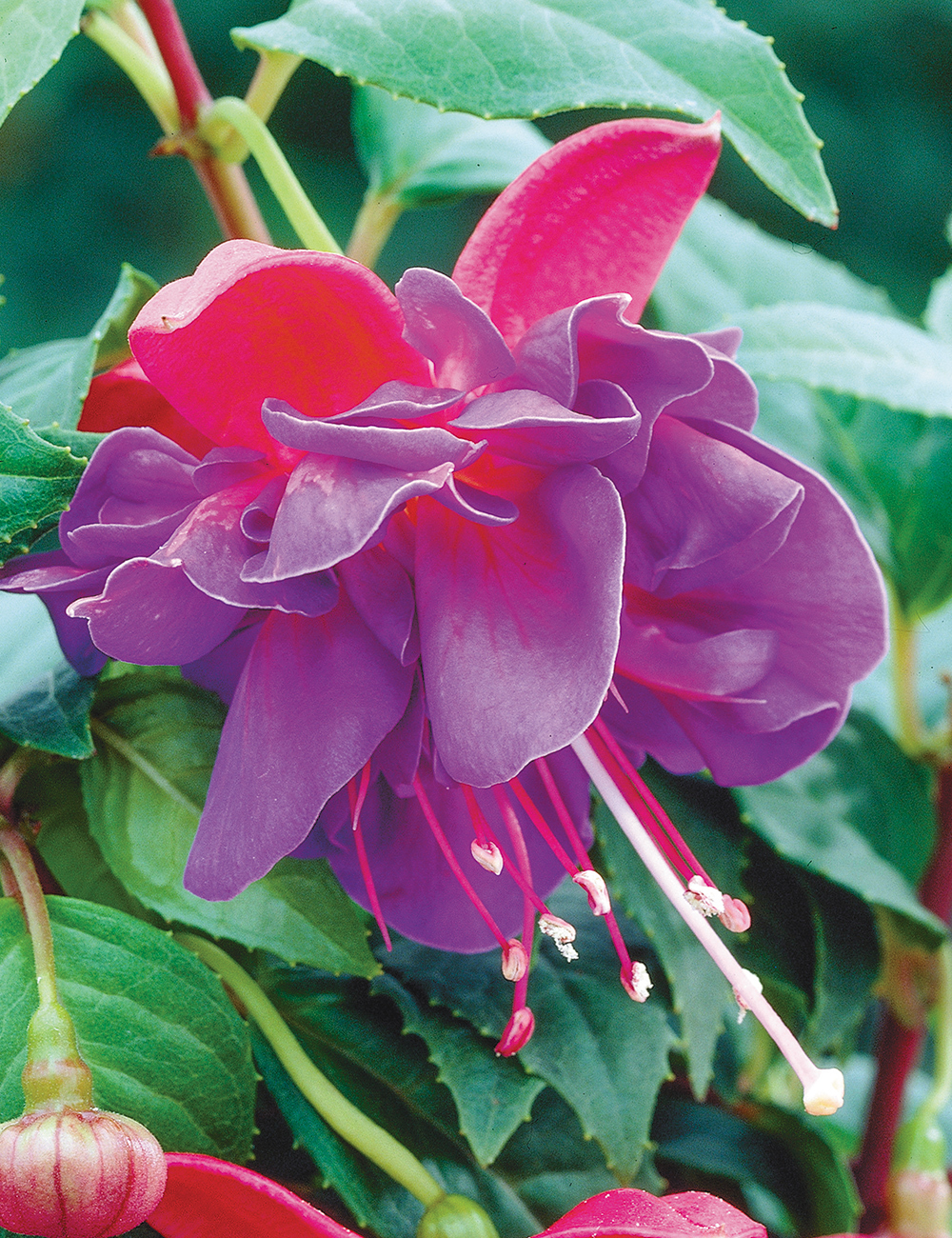
Fuchsia 'Dark Eyes' Tesselaar
Fuchsia Dark Eyes is a sensational and perpetual flowering Fuchsia, perfect for any basket. An impressive RHS Award of Garden Merit plant, popular for its rich aubergine and cherry red colour, it has the bonus of being one of the few trailing Fuchsia which is hardy. Height 15-20cm. Trails 50-60cm. Supplied as 3cm diameter plug plants. Plant Size
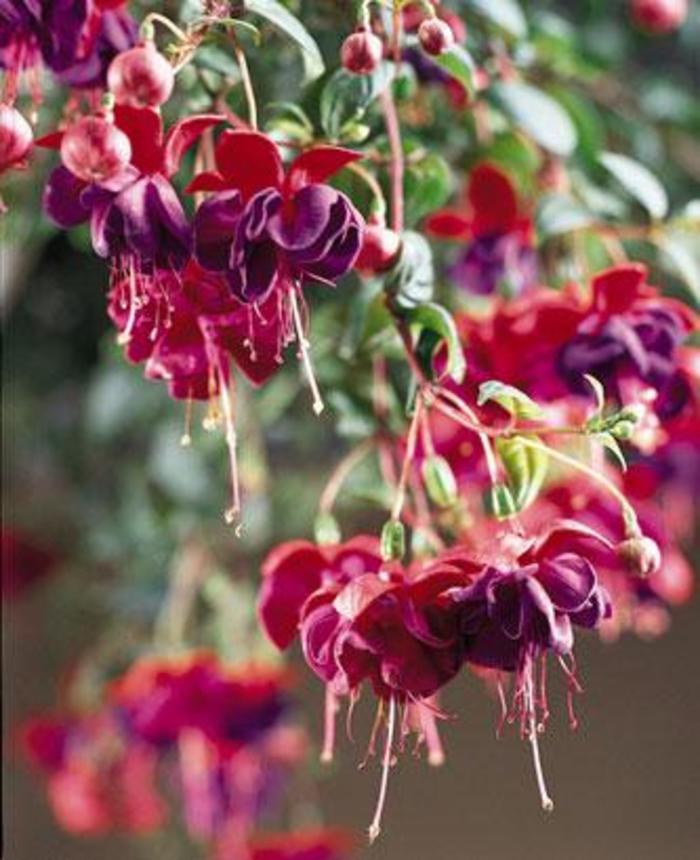
Fuchsia 'Dark Eyes' Fuchsia Ebert's Greenhouse
Fuchsia 'Dark Eyes' is a hybrid fuchsia that was first introduced in 1986. It is a deciduous shrub that typically reaches a height and width of about 45-60 centimeters (18-24 inches). This fuchsia cultivar features dark green, oval-shaped leaves. The flowers of Fuchsia 'Dark Eyes' are medium-sized and double, with red sepals and a striking violet-blue corolla.
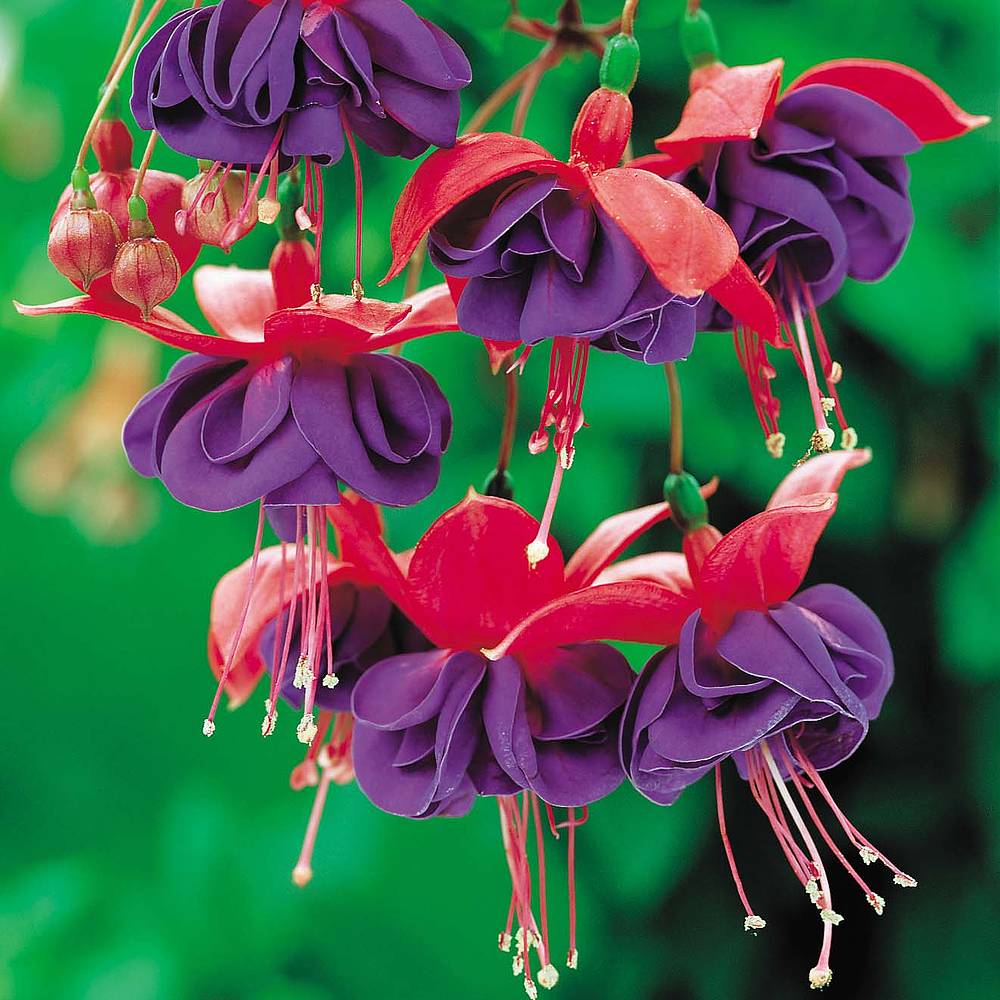
Fuchsia 'Dark Eyes' Van Meuwen
Standard Fuchsias are incredibly eye-catching and a fabulous way to display the striking beauty of their flowers. They add instant height, color, and charm to the garden. They are particularly effective next to doorways or entrance gates, on terraces, patios or balconies where they bring a spectacular show of summer color.

Fuchsia Dark Eyes (Trailing) Mirror Garden Offers
1 of 1 Variety or Cultivar 'Dark Eyes' is an upright, small, bushy, deciduous shrub with dark-green leaves. It bears single flowers with deep crimson sepals and tube and deep violet petals in summer and autumn. Season of interest Height and spread Metric | Imperial Where to grow Soil type Chalky Clay Loamy Sandy Soil drainage Moist but well-drained
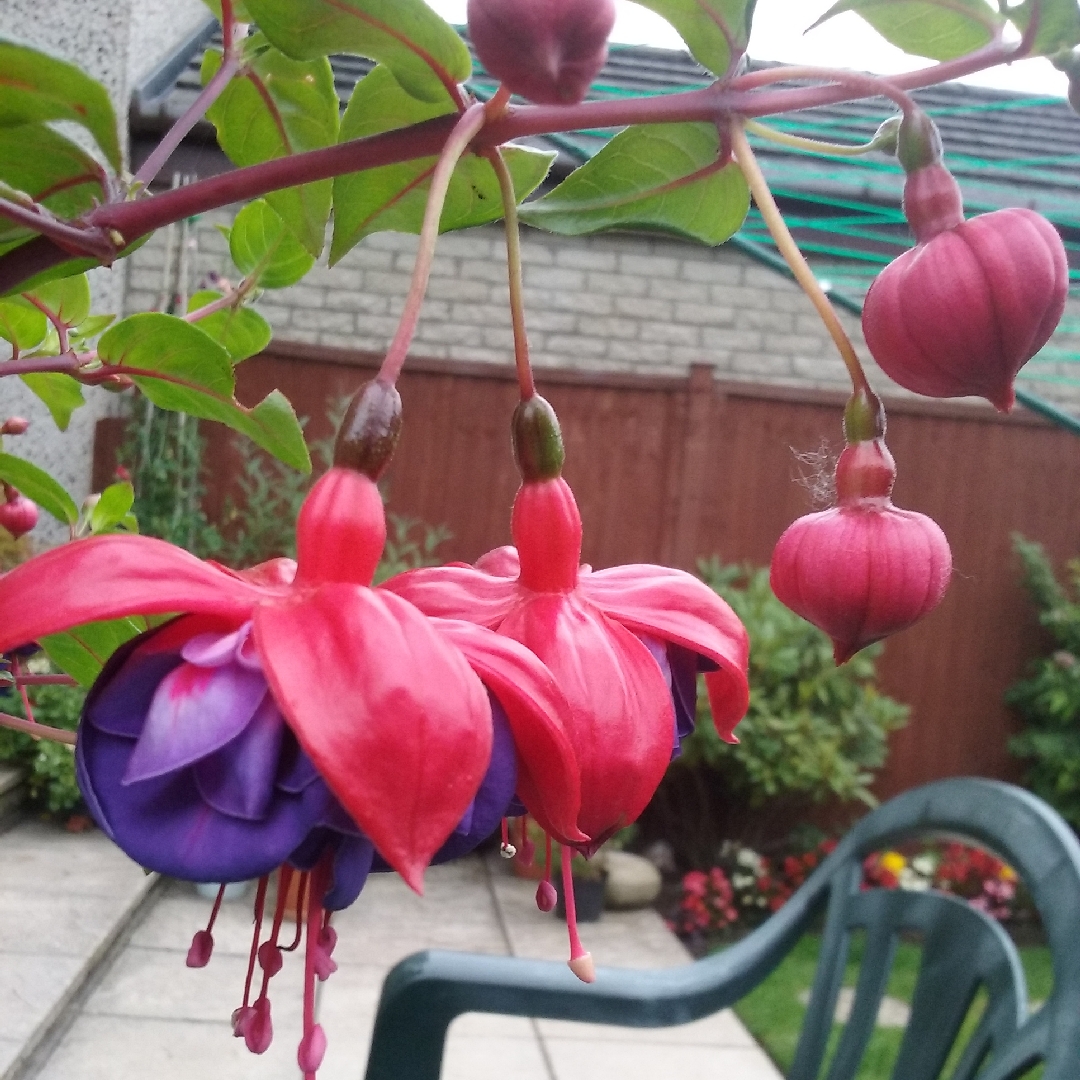
Fuchsia 'Dark Eyes', Fuchsia 'Dark Eyes' in GardenTags plant encyclopedia
fuchsia 'Dark Eyes' A bushy, upright, deciduous, small shrub to about 60cm in height, with dark green leaves., and double flowers, the tubes and upturned sepals a deep red with deep violet petals, produced from summer to autumn Join the RHS Become an RHS Member today and save 25% on your first year © RHS 2002 © RHS 2002 © RHS 2002 Save to My plants
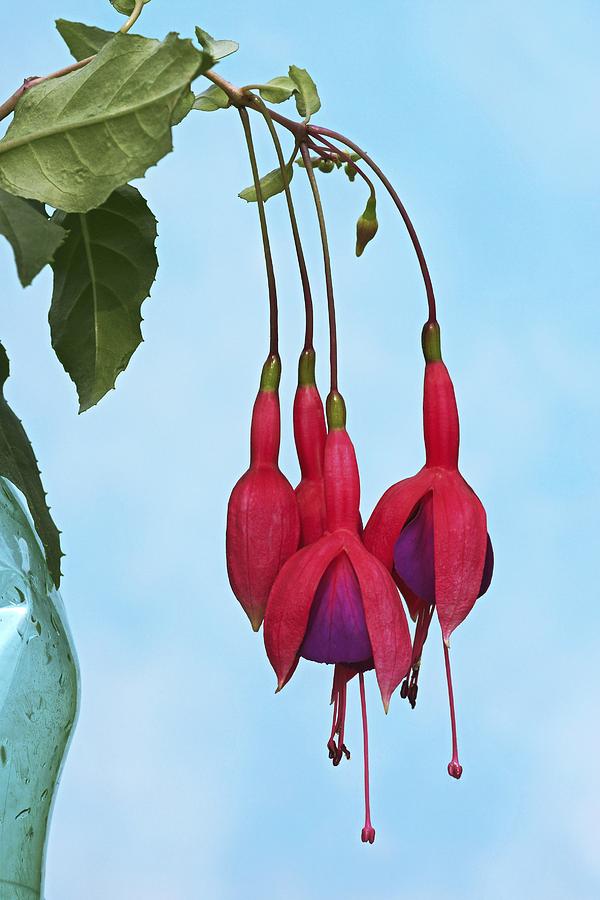
Fuchsia 'Dark Eyes' Photograph by Science Photo Library Fine Art America
Southern gardeners get the most enjoyment from fuchsia by planting in a pot, in spring, and placing it in a spot that gets only a few hours of morning sun. When summer arrives, move the pot to a shady porch or under a small tree. Never let the soil dry or become waterlogged. Fuchsia will drop all of its leaves if the roots are unhappy.
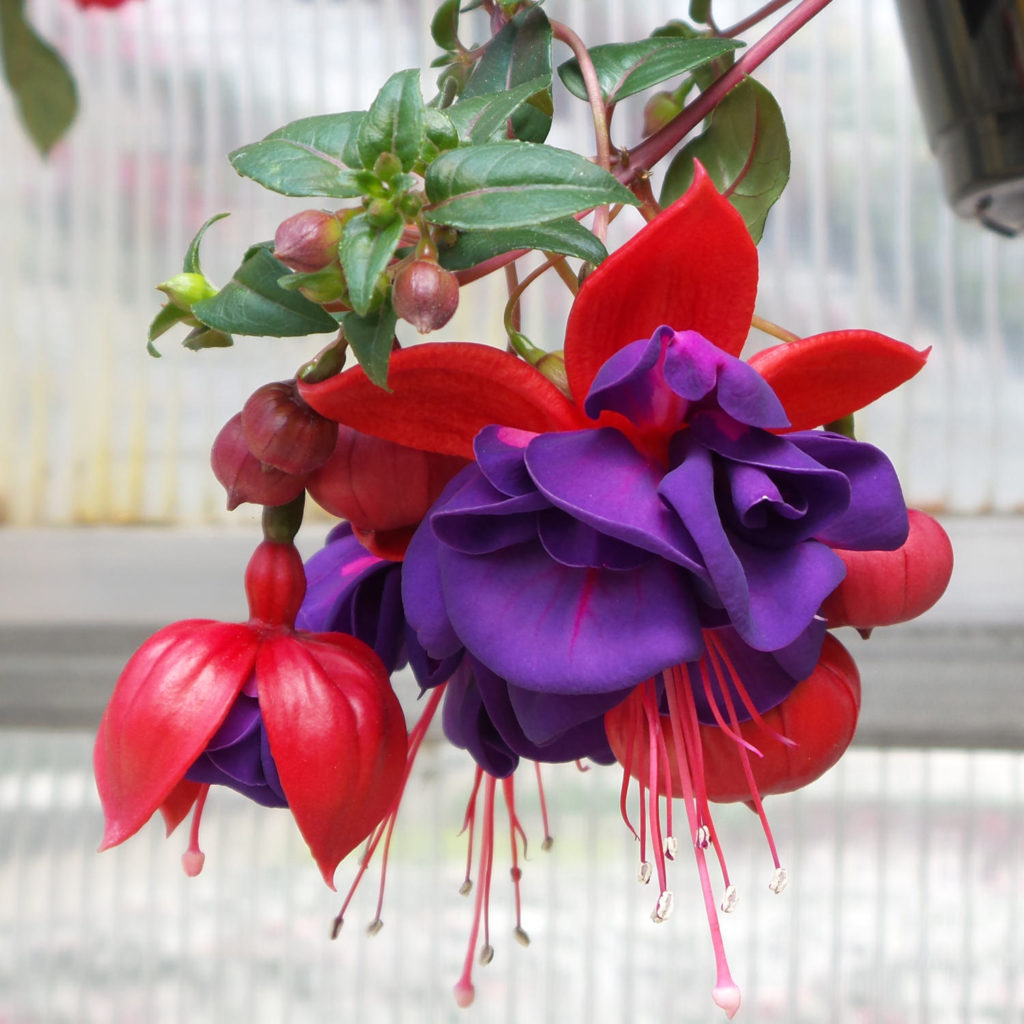
Fuchsia Dark Eyes Buy Fuchsia Annuals Online
Dark Eyes Fuchsia is a fine choice for the garden, but it is also a good selection for planting in outdoor containers and hanging baskets. It is often used as a 'filler' in the 'spiller-thriller-filler' container combination, providing a mass of flowers against which the thriller plants stand out.

Fuchsia Dark Eyes (Trailing) Express Garden Shop
Dark Eyes fuchsia is not a heavy feeder, but it can be fertilized occasionally throughout the growing season to support healthy growth. Proven Winners recommends applying a half-strength fertilizer every six to eight weeks. Always check your fertilizer's package directions since application methods and rates vary among brands.

Buy trailing hardy fuchsia Fuchsia 'Dark Eyes'
Dark Eyes Fuchsia is a fine choice for the garden, but it is also a good selection for planting in outdoor containers and hanging baskets. It is often used as a 'filler' in the 'spiller-thriller-filler' container combination, providing a mass of flowers against which the thriller plants stand out.

Fuchsia Dark Eyes (Trailing) J Parker Dutch Bulbs
Dark Eyes Fuchsia is a multi-stemmed annual with a shapely form and gracefully arching foliage. Its medium texture blends into the garden, but can always be balanced by a couple of finer or coarser plants for an effective composition.This plant will require occasional maintenance and upkeep, and should only be pruned after flowering to avoid removing any of the current season's flowers.